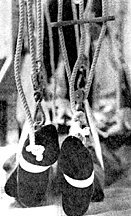Figure 1 shows the table in its prime, minus either of the two measuring systems that Bob Jansen later installed to determine real-time leg positions.
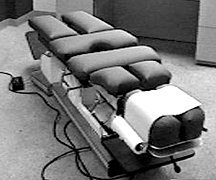
Figure 1: The friction-reduced table in its prime.
|
Figure 2 shows the table as it exists today, a mere shadow of its former self, the duct tape, paper clips, and chewing gum that struggled to hold it together having failed to prevent time's double- arrow of disuse and abuse.
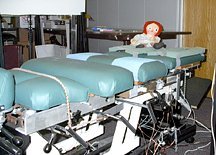
Figure 2: The friction-reduced table in ruination. |
Although this 800-pound gorilla of leg checks can no longer be used in its current state to investigate the basic science of leg checking, it does serve admirably to confirm the second law of thermodyanamics: The entropy of the universe is constantly increasing. As Moxy Fruvous noted: "It's entropy, you see, that turns finesse into mess."
I will use the rest of this column to document the rise and fall of the friction-reduced table, and what amounts to its unplanned obsolescence.
| Figure 3: Suspended right leg shortens with left head rotation. |
Around 1992, Dale Nansel, Tom Waldorf and I were investigating whether cervical manipulation could affect lumbar paraspinal muscle tone. It can. While working on a JMPT article, I stumbled upon literature confirming the presence of a tonic neck reflex in normal human adults. In Figure 3, the supine subject's legs are suspended by ropes from the table top. Turning to the left causes the joints of the left leg to extend, and those of the right leg to flex, creating leg length inequality in the inches! From my point of view, this "supine Derifield" leg check demanded replication in the traditionally chiropractic prone position: enter the friction-reduced table. Then-student Dr. Dan Bricker and I designed and built a few prototypes of a table that featured separate sections under the left and right legs, mounted on file drawer slides. This, in addition to a pelvic section mounted on ball bearings, afforded the legs semi-independent movement capabilities. We used electromagnets (Figure 4) to immobilize the movable sections as the subjects mounted the Hi-Lo table and were lowered to the prone position. We killed the power to the electromagnets when we wanted the table sections to float, thus allowing the subjects' legs to respond to changes in clinical conditions, like head rotation or challenges of various types.
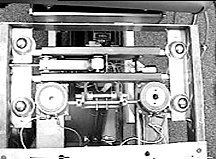
Figure 4: Two central electromagnets secure the lumbopelvic piece when energized, while the corner ball transfers permit universal coronal movements. |
In one of our first experiments, we had subjects turn their heads while an examiner (blinded to their movements) measured changes in leg-length inequality (LLI) by means of a ruler mounted between the legs.4 Basically, the leg tended to shorten on the side of head rotation, unlike the nonresponses reported by Falltrick.5 He had used a similar protocol, but not a table optimized to reduce friction at the patient-table interface. The shortening we observed on the side of head rotation was opposite the pattern seen in the supine study with the legs dangling from ropes, but consistent with the neurology of the tonic neck reflex. In the supine position, the hip and knee flex opposite the side of rotation, shortening the leg. In the prone position, a moment's reflection will establish that the leg joints would not be expected to change, but increased paraspinal muscle tone would draw up lower extremity ipsilateral to the side of rotation.
According to the Thompson technique protocol, when each leg symmetrically retracts as the head is turned from side to side, "bilateral cervical syndrome" is present, supposedly a type of atlanto-occipital subluxation.6 Although our results are not necessarily inconsistent with this conclusion, we cannot rule out that relative leg retraction on the side of rotation might represent normal physiology, not subluxation. In fact, failure to show such symmetry might turn out to be more suggestive of pathology. Change in relative leg positions with head rotation may reflect active tonic neck reflexes,7 possibly results from passive stretching of connective tissues, or both.
I have also concluded that if the patient's clothing and/or the table top is highly textured, or if the table surface is fabricated from foam soft enough to envelop (and thus restrain) the patient's legs, then it is not realistic to expect the legs to change their relative positions during isolation or compression testing, or as a result of cervical rotation or any other sort of clinical challenge. We also learned in these experiments that patients or experimental subjects mounting an examination table are in effect "spring-loaded." When the upright Hi-Lo table descends to the prone position, and the footplate on which the patient is mounted falls away, the patient is stretched on the table surface. We observed a cephalad jump of each leg when the table sections were released by killing power to the stabilizing electromagnets. We found many factors-breathing patterns, knee positions, hand positions, etc.-to influence this preloading of the patient. Who would have thought that leg check was this complicated?
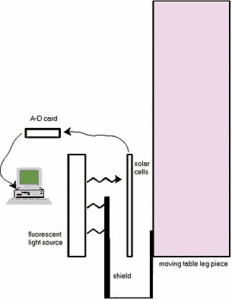
Figure 5: The optoelectric measuring system. |
Some time after this initial work was done, Bob Jansen devised two different measuring systems for computing absolute and relative leg positions, both with submillimetric accuracy and capable of recording continuously (sampled 11 times per second) in real time. The first system was optoelectric, shown in Figure 5.8 As each leg section moved, it incrementally moved a shield that was mounted in-between a light source and a solar battery. This would change the voltage output of the battery, which was passed through an analog to digital card to a PC where voltage changes were transformed into millimeters of movement. The second system, a tighter one for a variety of reasons, had the moving leg sections turning the shaft of a $3 potentiometer. The resulting voltage changes were, as before, passed to the PC through the analog to digital card.
Although we had already found evidence, just using a ruler, that "functional LLI is a stable clinical entity, which shows great conservation across a variety of test conditions,"9 we were able to show that more conclusively, now that we were armed with Jansen's more sensitive and accurate measuring subsystem and some technical refinements in the friction-reduced table.10 This entailed determining the test-retest reliability of repeated measures of leg-length inequality in asymptomatic subjects without clinical or experimental interventions. To our knowledge, this simple baseline parametric study had never been done, but was absolutely essential for the interpretation of any further work in this area, since clinical interventions are best assessed against this benchmark. We described the sensitivity of the optoelectric system separately.8
Leg-length inequality may occur through uneven bilateral leg shortening, uneven bilateral leg lengthening, unilateral leg shortening or lengthening, or a combination of the last two possibilities. Any left-right delta that emerges following the magnet release represents an objectively measured, functional leg-length inequality. The fact that mean magnitude and direction of leg-length asymmetry were found to be statistically indistinguishable over a one-week interval suggests that the phenomenon in general, even at mean submillimetric levels, is stochastically stable for at least that long.
We eventually moved on to much more sophisticated experimentation, modeling prone leg checking in the friction-reduced environment. We started out using heavy washers hanging from big hooks attached to wire cables wrapped around pulleys (all this high tech stuff came from the local hardware store) to apply cephalad forces to the legs, to emulate the pressure most clinicians apply to the legs while doing prone leg checks.11 Just for the hell of it, we eventually reversed this, applying distractive forces using the same washer-hook-cable-pulley system.12 All this resulted in a JMPT article13 that concluded: "The functional short leg is confirmed as a stable clinical reality, a multitrial means of unloaded leg positional differences. The prone leg check may be a loading procedure, albeit unmeasured, that detects nonweightbearing, functional asymmetry in loading responses. These probably reflect differences in left-right muscle tone, joint flexibility and tissue stiffness. The relatively nonmonotonic, nonlinear quality of left- leg responses is consistent with asymmetric neurological responses."
What Killed the Friction-Reduced Table, Sort of...
Jansen, our invaluable student research assistants and I were getting pretty worn out by our disturbingly baroque method of applying compressive and distractive forces to the leg pieces by means of hanging 190-gram washers around pulleys, and adding a washer every 10 seconds or so. One day Jansen appeared in the laboratory armed with a small electric motor he had stripped from a junkstore rotisserie. He installed it under the table, linking its shaft with the left and right leg sections, so they would be moved up and down on the Y-axis as the motor turned. From this point forward, the forces would be automatically applied by this motor. We could observe on the PC monitor in real time the positions of the right and left legs as represented by two sine waves, as the motor cycled back and forth between compression and distraction cycles. Then, as the head turned, or the atlas was tapped, or we did some sort of isolation or compression test,14 we could see perturbation of one or both sine waves. Call it an evoked response, creating or altering the baseline leg-length inequality as assessed dynamically (with the legs in continuous motion). All this resulted in lots of sadly unreported research and one small symposium report,15 whose data may have been inconsistent (hard to say) with what we had previously reported in our JMPT article.
By this time, I had become too busy with new administrative duties at Palmer West to spend much time in the laboratory, largely abandoning Jansen to continue the work without me. He being a nonclinician, the work took on a different and less interesting flavor for me. This project, born of my interest in leg checking, had become basic science research. I hated the rotisserie motor, although I will admit to having been mesmerized watching it move the legs back and forth, kind of like the tail on a Kit-Kat clock (Figure 6).

Figure 6: |
At one of the Research Agenda conferences, Dr. Cheryl Hawk perfectly captured the absurdity of an overly-extended and part-time researcher like myself when she declared: "OK, I have an hour at lunchtime, let's do some research!" On the contrary, getting anything done in a lab requires a lot of fooling around and just hanging out - science and gossip, gossip and science. (With Jansen, gossip always combines existentialism and culture vulturism.) Every now and then a published paper crystallizes some element of the daily activity, but much and (even most) of what goes on in the lab may never get reported, especially if one or more of the primary researchers' attention gets diverted in extraneous pursuits.
In some other time and place, I'll describe how we got mesmerized by the technology, how unnerving it can be to gaze into the Hubble telescope of leg checking and see an alternative universe on the other side. Next time I am scraping for a Dynamic Chiropractic article, or maybe in the monograph I really ought to write about all of this: "The Loneliness of the Long- Distance Leg Checker," or maybe "The Tao of Leg Checking."
For a couple of years the table sat there unused. The ancient P75 computer to which it was attached was left on continuously, the screen saver appropriately set to a twilight zone kind of display, with stars twinkling in and out of existence. Things started simply falling off the table, or we just scrounged parts from it.

Figure 7: |
Have you ever seen one of those movies where a bride is abandoned on her wedding day? The wedding cake is left untouched for years in a dark upstairs room; spider webs shroud the cake as bats fly through the room. Vincent Price is usually in this movie. Well, that's what happened to the friction-reduced table. It turned into a wedding cake with spider webs on it. Vincent Price, at this very moment, is having his legs endlessly cycled between distraction and compression.
Author's note: The American Back Society is meeting in Orlando, Dec. 5-9. Hope to see you there. No, friction-reduced leg checking is not featured in this symposium.
References
- Cooperstein R, Jansen P. Technology description: The friction-reduced segmented table. Chiropractic Technique 1996;8(3):107-111.
- Cooperstein R. Investigating the short leg phenomenon: the friction-reduction hypothesis. Dynamic Chiropractic 1996;14(2):31-32,39.
- Nansel DD, Waldorf T, Cooperstein R. Effect of cervical spinal adjustments on lumbar paraspinal muscle tone: evidence for facilitation of intersegmental tonic neck reflexes. J Manipulative Physiol Ther 1993;16(2):91-5.
- Cooperstein R, Bricker D, Jansen R. Detection of absolute and relative left and right leg displacements as a function of head rotation: the advantages of using a friction-reduced multi-segmented table. In: Cleveland III C, Haldeman S, editors. Conference Proceedings of the Chiropractic Centennial Foundation; 1995; Washington, DC: Chiropractic Centennial Foundation; p. 323-324.
- Falltrick DR, Pierson DS. Precise measurement of functional leg length inequality and changes due to cervical spine rotation in pain-free subjects. JMPT 1989;12(5):369-373.
- Thompson C. Thompson Technique Reference Manual. Elgin, Illinois: Thompson Educational Workshops, Williams Manufacturing; 1984.
- Hellebrandt FA, Schade M, Carns ML. Methods of evoking the tonic neck reflexes in normal human subjects. American Journal of Physical Medicine 1962;41(3):90-139.
- Jansen R, Cooperstein R. Sensitivity of an optoelectric measuring apparatus for evaluating positional asymmetry in a friction-reduced examination environment. In: Hansen DT, editor. Proceedings of the 10th Annual Conference on Research and Education, "Chiropractic Applications for the Future"; 1996; San Diego, CA: Consortium for Chiropractic Research, California Chiropractic Association; p. 170-172.
- Cooperstein R, Bricker D, Jansen R. Confirmation of leg length inequality as a stable, objectively-measured entity: The construction and implementation of a friction-reduced, multi-segmented table. In: Cleveland III C, Haldeman S, editors. Conference Proceedings of the Chiropractic Centennial Foundation; 1995; Washington, D.C.: Chiropractic Centennial Foundation; p. 325-326.
- Cooperstein R, Jansen R. Temporal stability of functional leg length inequalities in eleven asymptomatic subjects. In: Hansen DT, editor. Proceedings of the 10th Annual Conference on Research and Education, "Chiropractic Applications for the Future"; 1996; San Diego, CA: Consortium for Chiropractic Research, California Chiropractic Association; p. 166-169.
- Cooperstein R, Jansen R. Emulation of prone leg checking in a friction-reduced environment: optoelectric detection of loaded functional leg length inequality. In: FCER, editor. 1996 International Conference on Spinal Manipulation; 1996; Bournemouth, England: Foundation for Chiropractic Education and Research; p. 206-207.
- Jansen R, Cooperstein R. In vivo measurement of soft tissue elasticity as a function of consecutively increased load in a friction-reduced environment. In: FCER, editor. 1996 International Conference on Spinal Manipulation; 1996; Bournemouth, England: Foundation for Chiropractic Research and Education; p. 204-205.
- Jansen RD, Cooperstein R. Measurement of soft tissue strain in response to consecutively increased compressive and distractive loads on a friction-based test bed. JMPT 1998;21(1):19-26.
- Cooperstein R. Technique system overview: Activator Methods Technique. Chiropractic Technique 1997;9(3):108-114.
- Jansen RD, Cooperstein R. The effects of controlled bilateral traction and compression on relative leg lengths of asymptomatic females. In: FCER, editor. 1998 International Conference on Spinal Manipulation; 1998; Vancouver, BC, Canada: Foundation for Chiropractic Research and Education; p. 180.
Robert Cooperstein,DC
San Jose, California
Click here for previous articles by Robert Cooperstein, MA, DC.






